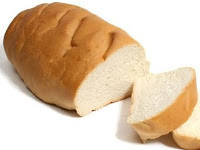What do a sugar lump, a loaf of bread and a potato have in common? They all contain carbohydrates. The sugar lump is made entirely of one of the simpler types of carbohydrate, which are all called sugars. The bread is made from flour, which contains a more complicated carbohydrate, starch. The potato also contains starch, food stored by the plant to feed its new shoots in the spring.
There are many types of sugar. Plants make sugars by the process of photosynthesis (see: photosynthesis). Plant sap is full of sugar. Both plants and animals change these sugars into one type, glucose, which they use for energy. Plants store glucose by combining many molecules of it to form into a large starch molecule. Starch does not dissolve in water and is too large to enter or leave a cell. When the plant needs the stored energy, it breaks down the large molecule into small glucose molecules and uses them. Glucose is a small molecule that dis-solves in water, and passes easily into and out of the cell. Carbohydrates are the main source of energy in our diet. When we eat stored plant starch in flour or potatoes, our bodies too break it down into glucose.
The name carbohydrate refers to the chemical composition of these compounds. The formula shows that for each carbon atom (C) there are two hydrogen atoms (H) and one oxygen atom (O), as in water (H20). For instance, a sugar that contains six carbon atoms usually has enough hydrogen and oxygen atoms to make six molecules of water: C6H12O8.
